Newsdesk Archive

Researchers have found that deep, relatively-warm water from the three ocean basins enters the Southern Ocean and spirals southeastwards and upwards around Antarctica before reaching the ocean's mixed layer, where it interacts with the atmosphere. The study, published in the journal Nature Communications, also reveals that strong eddies, caused by topographical interactions at five locations within the current circling Antarctica, play a major role in this upwelling process. The researchers were additionally able to determine how much water from each ocean basin made it up what they call this "spiral staircase," and believe this journey happens much quicker than previous estimates suggest.

A 71 year old grandmother, gospel blues singer Olive Knight, is the driving force behind the experiment concerned with current programs tackling mental health problems in remote Aboriginal communities in Australia. Spurred by suicide rates and personal loss, Desert Feet aims to heal wounds with music therapy.

When the mullet migrate northward, the fishermen in Laguna, Brazil are waiting. They rise early and take their places in line, waist-deep in the water, tarrafa—a kind of circular throwing net—in hand. Without a word, the dolphins arrive, herding schools of mullet towards the fishermen. The fishers say that the dolphins are an essential part of their fishing; they wait to fish until their marine helpers to arrive. Now scientists have looked at the acoustic behaviors of Laguna’s dolphins. By examining thousands of whistles statistically, the team looked for differences between the dolphins that coordinate with fishermen and those that don’t.

Four wood sculptures (three male and one female) a scepter, metal vessels, textiles and remains of winkles were found at Chayhuac An —probably the first large enclosure at the pre-Columbian adobe city of Chan Chan in northern La Libertad region. The ancient objects were found lying on a funerary platform.

Archaeologists working in Lambayeque, Peru have discovered an ancient metallurgy workshop, two tombs and nine victims of human sacrifice, believed to date back over 1,000 years. The burial practices of the Sican were banned after the arrival of the Spanish conquistadors in the 16th century.

The 2,000 year old statue known as the Lion of Al-Lat, badly damaged by Islamic State in Palmyra went on display on Sunday in Damascus after being restored. It was one of several ancient monuments damaged by Islamic State at Palmyra, the ancient city in central Syria which the jihadists have twice seized from government control.

A marine biologist explored a giant sinkhole off the coast of Australia goes so deep that it protects marine life from hurricanes. The enormous hole in the seafloor located within the Great Barrier Reef is home to countless creatures. According to a video post on Instagram, the sinkhole was found for what may be the first time with satellite imagery.

A rescued green sea turtle named Picasso was released back into the Gulf of Mexico on Saturday, carrying the ashes of a self-taught Texas oceanographer, Tony Amos, who founded the rehabilitation center that helped nurse it back to health. The center took in 30 turtles injured in the wake of Hurricane Harvey, and continues to do the work Amos was so devoted to.

Artist George Khut has reimagined one of the life-saving vehicles as an interactive biofeedback art exhibit. The converted ambulance called The Mobile Mood Lab is traveling around New South Wales, AU, for The Big Anxiety art festival.
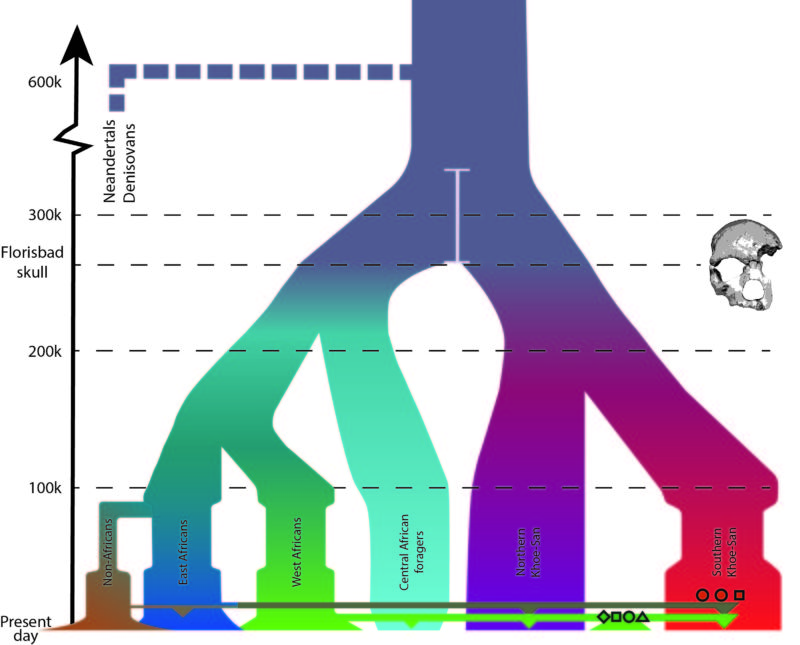
A new paper was released that makes the case that humanity's older than we thought. The finding is based on a different type of evidence: a genome from a stone-age skeleton in southern Africa. There's enough uncertainty in the work that this won't settle the issue, but the paper reinforces earlier findings that the secret to understanding our past will be found in Africa.
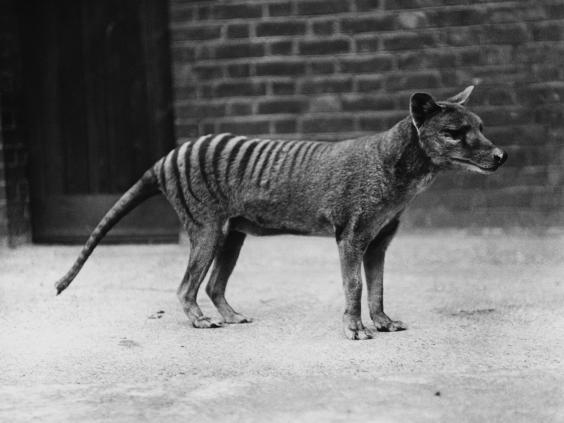
Article written by the author of a non-fiction book about animal neuroscience focuses on MRI scans of dog brains that offer a window into the cognition of the extinct thylacine known as the Tasmanian Tiger.

Poison frogs become poisonous by isolating chemicals from their food and storing them in their skin. One such compound, epibatidine, is a stronger painkiller than morphine, but has not been tested in humans because even low doses are deadly to rodents. But for the frogs themselves, this powerful neurotoxin is totally impotent.

“Soulful Creatures” is a new exhibit at the Brooklyn Museum in New York that applies aged artifacts and contemporary technology to investigate the role of animal mummies in antiquity.

The first modern humans may have emerged up to 350,000 years ago—170,000 years earlier than previously thought. Analysis of ancient DNA has allowed scientists to trace back the ancestry of people from South Africa to determine when our ancestors split from other hominin species. Their findings consistently point to an early date of divergence, between 350,000 and 260,000 years ago.

When you're investigating complex questions, you've often got to dig deep to find answers. A group of UC Santa Barbara geologists and their colleagues studying tsunamis did exactly that.

How wampum changed from bling to money is a complicated story. The colonists back then did not have printed currency, so their trade economy was mostly based on the barter of commodities such as corn and pelts. When wampum, made from whelk and clamshells, became a prime commodity in the Northeast corner of North America in 1630, it forever altered the Native systems of reciprocity and balance in life, labor and trade.

Fascinating article from Smithsonian focusing on an innovative new method is known as peptide mass fingerprinting, originally the idea of a PhD student, enabling discernment of whale species from ancient baleen samples. It’s an approach that involves breaking proteins down into shorter amino acid chains using known molecular biomarkers, in a process cheaper than DNA analysis.

Tonga was once at the centre of a vast trading empire stretching 500,000 square km (193,000 square miles) across the Pacific. Stone tools imported during the last 1,000 years from Fiji, Samoa, and the Society Islands reveal that the maritime empire of Tonga served as a hub through which prehistoric people exchanged products and political ideas, according to a study.

Informative biographical reference article from LiveScience, addended by interview with a museum curator. "Like many explorers we know about today, Hernán Cortés' role in the Age of Exploration was influential but controversial," said Erika Cosme, Administrative Coordinator of Education and Digital Services at The Mariner’s Museum in Newport News, Virginia. "He was a smart, ambitious man who wanted to appropriate new land for the Spanish crown, convert native inhabitants to Catholicism, and plunder the lands for gold and riches." The Spanish conquistador who invaded Mexico was aided by superstition and disease.

Discover magazine blog entry: Research findings on three early Native American cultures from the southwestern United States, as well as Nordic maladaptive society, show how each responded to environmental challenges in different ways that dramatically altered their peoples' futures.

Anthropologists have found the oldest known DNA from Africa, up to 8,100 years old, in the highlands of northern Malawi. "Malawi is positioned in between where living hunter-gatherers survive," one expert says. “For the first time, we can see the distribution of ancient hunter-gatherer DNA across Africa, showing how these populations were connected in the past.”

The world was crying Mayan apocalypse on December 21, 2012, so it seemed prudent to explore other end-of-the-world teachings from other tribes. Some of those teachings are just as relevant in 2017 as they were in 2012.

Earlier this year, it was announced that the cannabinoid THCa, another molecule found in the cannabis plant, has neuroprotective effects. Apart from flying in the face of the belief that cannabis damages brain cells, why should we care whether something is neuroprotective or not?

It was a stroke of serendipity that led to Michael Zanetti's discovery of the hottest rock on Earth. The glassy rock he found at the 28-kilometre-wide Mistastin Lake crater in Labrador, recorded the hottest temperature in a rock formation on Earth as a result of asteroid impact – a whopping 2,370 C (4,298 F).
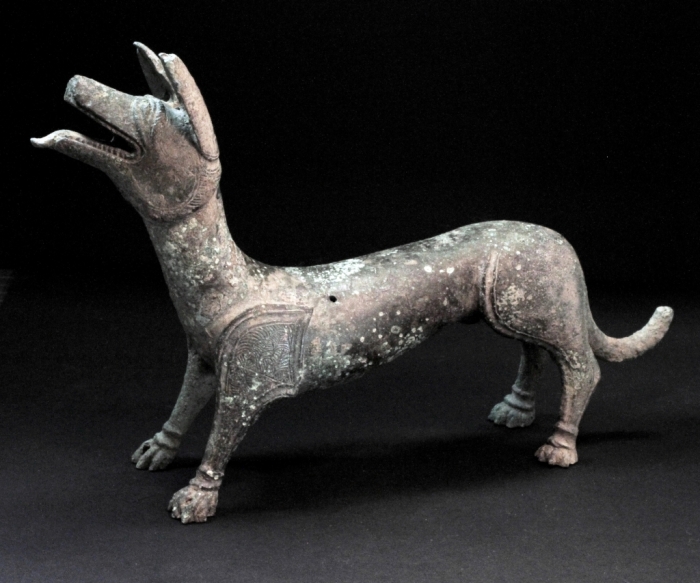
An amateur metal detectorist has hit the motherlode: a cache of bronze treasures in Gloucestershire, England, dating back to the last decades of the Ancient Roman occupation of Britain. The find, which is being hailed as the first such in British history, includes an intact bronze statue of a "licking dog", the first of its kind ever found in Britain, considered to be a healing totem since dogs lick their own wounds to induce healing. Article includes a video of the finds.

5,000 years ago, the Yamnaya culture migrated into Europe from the Caspian steppe. In addition to innovations such as the wagon and dairy production, they brought a new language, Indo-European, that replaced most local languages the following millennia.

It is increasingly seeming like only a matter of time before humans get to Mars. One of the big questions is - once we get there, how are we going to live? The United Arab Emirates is seeking an answer to this question by building an entire city at the projected cost of $136 million USD to simulate Mars conditions, as realistically as possible here on Earth.

For the first time ever, scientists have stored light-based information as sound waves on a computer chip - something the researchers compare to capturing lightning as thunder. Article contains a short explanatory video.
Scientists have identified what they believe to be the missing brain connections that cause hallucinations for people with Parkinson's, a discovery which may help doctors predict and track the development of the disease in the future.

Colours mean different things to different people across time and space, but the colour red has remained an integral way of representing hate, love and luxury for millennia. Forbes magazine review of a new book by a medieval historian covering approximately 30,000 years of the history of the colour red.

You've heard of search-and-rescue dogs, drug-sniffing dogs, bomb-sniffing dogs. Now, there are specialized historic and prehistoric human remains detection dogs. They’re trained to sniff out the remains of people buried as long as 9,000 years ago. This past week, their assignment was to find pioneer burials from the early Oregon Trail days in the Pacific Northwest US.

Modern humans and Neanderthals were strikingly different in many respects. Yet, new genetic analysis suggests that Neanderthals may have had an out-of-Africa migratory experience not unlike our own.

When it comes to Native American lore and extraterrestrials, they were commonly referred to as ‘Star Beings.’ When it comes to the topic of sharing beliefs from our very recent past from this culture, it’s best to leave it up to those who are direct descendants from where these stories permeated, and those who grew up around the Elders sharing them. Article contains excerpts from storytellers, chieftains, and a link to a 6 minute YouTube video.

Researchers are revising their understanding of early Earth—including how the planet came to support multicellular life—by tracing the metallic element titanium through the planet’s crust through time.

From initiation into adulthood to astronomy to honoring the Gods, there were rituals for everything—even disposing of enemies. The physical remains left by ancient rituals give archaeologists a deeply personal glimpse into long-gone societies. Sometimes, these finds confirm long-held beliefs. Other times, they’ve turned them on their heads.
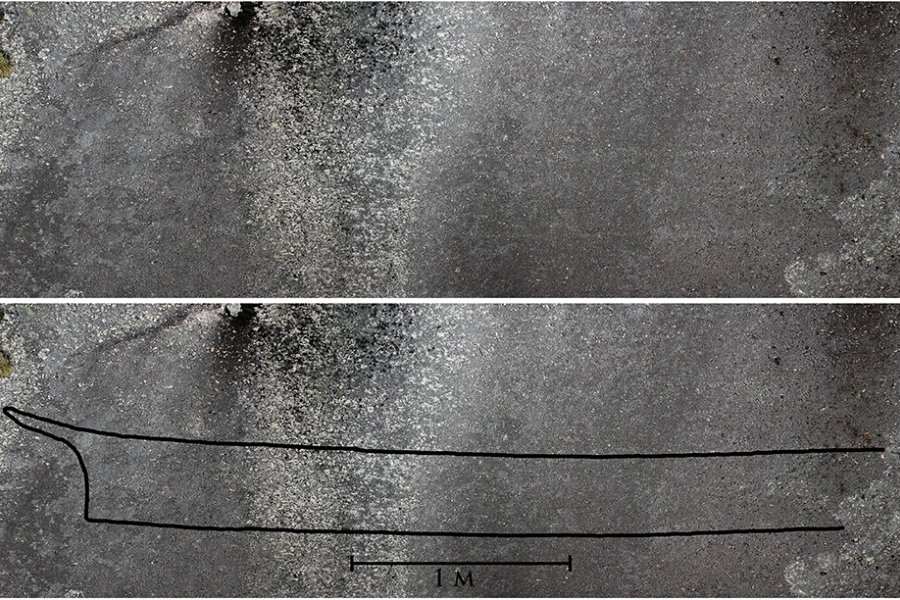
A 13 foot long petroglyph depicting a boat was discovered in northern Norway by a retired geologist. An archaeologist from Tromsø University said the petroglyph is thought to be between 10,000 and 11,000 years old, based upon the height of water level marks on the rock where it was carved.

Question-and-Answer style article with Nigel Goldenfeld, physicist and director of NASA's Astrobiology Institute for Universal Biology, who applies the physics of condensed matter to understand why evolution was blazingly fast for the earliest life — and then slowed down.

The stone lavatory was found during an archaeological dig near Gyeongju. It is thought to be from the eighth century AD's Unified Silla Dynasty. Excrement would be flushed down the drain by pouring water into the toilet. Experts believe it was intended for use by a member of the royal family.
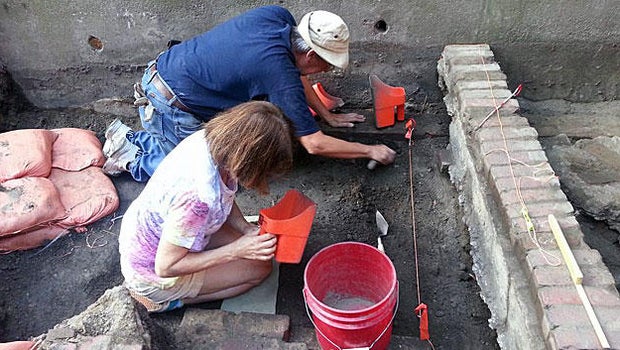
The Paul Revere House in Boston is a National Historic Landmark and was built in 1680. Workers called in a city archaeologist when they found a 4 x 6 foot brick foundation that was too small to belong to a house or a storage building. That left the most important structure in any pre-indoor plumbing household – the outhouse. Hopes are high for retrieving composted excrement for analysis of seeds, parasites, and castoff refuse.

The Essity Company makes quilted and triple layer Velvet toilet tissue, and koala-branded Cushelle, sold to millions of homes across Britain. But the wood pulp used to produce them comes from protected forest land which is home to vulnerable species such as grey wolves and lynx.

NASA's Earth Observatory website shared the first preliminary observations of Hurricane Harvey made by its Cyclone Global Navigation Satellite System (CYGNSS). The data was used to coordinate flights of NOAA's fleet of hurricane hunter aircraft.

After Hurricane Irma's storm surge contaminated all the fresh watering holes with salt for the tiny dog-sized Key Deer on Florida's Big Pine Key refuge, the US Fish and Wildlife Service has officially bucked its own rules and allowed residents to offer fresh water for the dehydrated suffering animals. Feeding endangered species still remains frowned upon.

In Costa Rica, researchers are cloning cacao hybrids that are resistant to frosty pod rot, a devastating white fungus blight that has spread throughout Latin America.
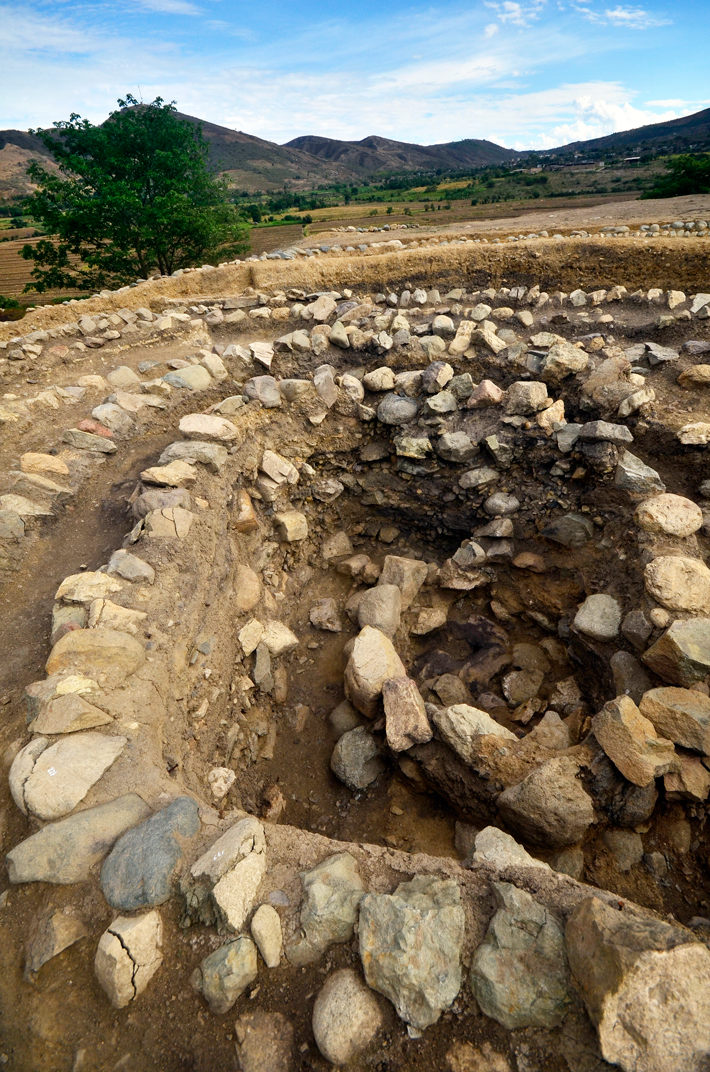
International Business Times reports that the remains of nine men of the Sican culture were discovered by archaeologists at the site of Huaca de la Cruz, which is located in the Pomac Forest Historic Sanctuary in northern Peru. The men are thought to have been ritually killed some 1,000 years ago.

There's still part of a dynamite charge stuck in a hole along a sandstone cliff near Greybull, Wyoming, where in 1962 stonemasons removed tons of ancient native petroglyphs for display at what is now the Buffalo Bill Center of the West. The Greybull rock was removed with the idea that the stone and its pecked human and animal figures, possibly made 800 to 1,000 years ago, would be better protected in a museum than on the side of an exposed cliff where gunmen were using them for target practice. The images will now be documented, digitally enhanced and better preserved.

Some of our ancestors are known only by the merest fossils – a toe bone here, a jaw fragment there. In those cases, it’s all we have to build the story of human evolution. But with spectacular recent finds such as Australopithecus sediba and Homo naledi, that story is starting to be rewritten in ways we never imagined. The following five ancestors have the fewest fossils of all: Sahelanthropus tchadensis, Orrorin tugenensis, Kenyanthropus platyops, Homo rudolfensis, and the Denisovans. When we find more evidence, maybe their stories will change the most.

A study of 5,000 year old graves in north central Spain suggests higher-ranked people had more elaborate burials. Researchers found that people had similar diets of wheat, barley, and protein from cattle. But there was huge variation in the carbon isotopes between different people. The differences correlated with elevation, temperature, and precipitation. The team suggests that lower class people were buried in caves, while higher classes were buried in elaborate graves.

Concise editorial article by a medical doctor in Oregon regarding genetic traits and links recently discovered between the Eskimo tribe of First Americans, and Ancient Denisovans and Neanderthals.

The lost eighth continent of Zealandia was once above land, fossils from ocean sediments reveal. A 9 week journey to plumb the remote ocean depths has revealed that Earth does indeed have an eighth continent with 60 million year old secrets.

Archaeologists have returned to excavate the sunken remains of the 18th century Dutch East India ship Rooswijk off the English coast. Among the finds brought ashore in Ramsgate are three wooden chests, one human thigh bone, and some genuine old-fashioned treasure in the form of beautiful Mexican silver dollars minted just a few years before the wreck, and some chopped up pieces-of-eight. Several cannons and two huge anchors still lie in the silt on the seabed.

Book Review by Ancient History Encyclopedia: An archaeological exploration of the mysterious world of cave art through the ages. Showcasing the most astounding discoveries made in more than 150 years of archaeological exploration, 'Cave Art' explores the creative achievements of our remotest ancestors and what they tell us about the human past. Comprehensive text with a lively engaging approach.

A potential 6,000 year old henge site has been discovered in North Ayrshire, Scotland, thanks to aerial photography. In order to test their theory that this was a previously unrecorded site, Kilwinning Heritage carried out a small-scale excavation, revealing that the circles were formed from two shallow ditches measuring 2m wide and spaced 8m apart. They also discovered a substantial stone-lined hole for a timber post or stone upright within the inner ditch. This latter feature may have had some kind of ceremonial purpose, experts suggest.

A tropical bird never before seen in Massachusetts has been rescued from a Cape Cod beach after it was likely blown off course by Hurricane Jose. Wildlife rescuers said the masked booby, common in the Gulf of Mexico, was thin, weak, and in respiratory distress due to a fungal infection.
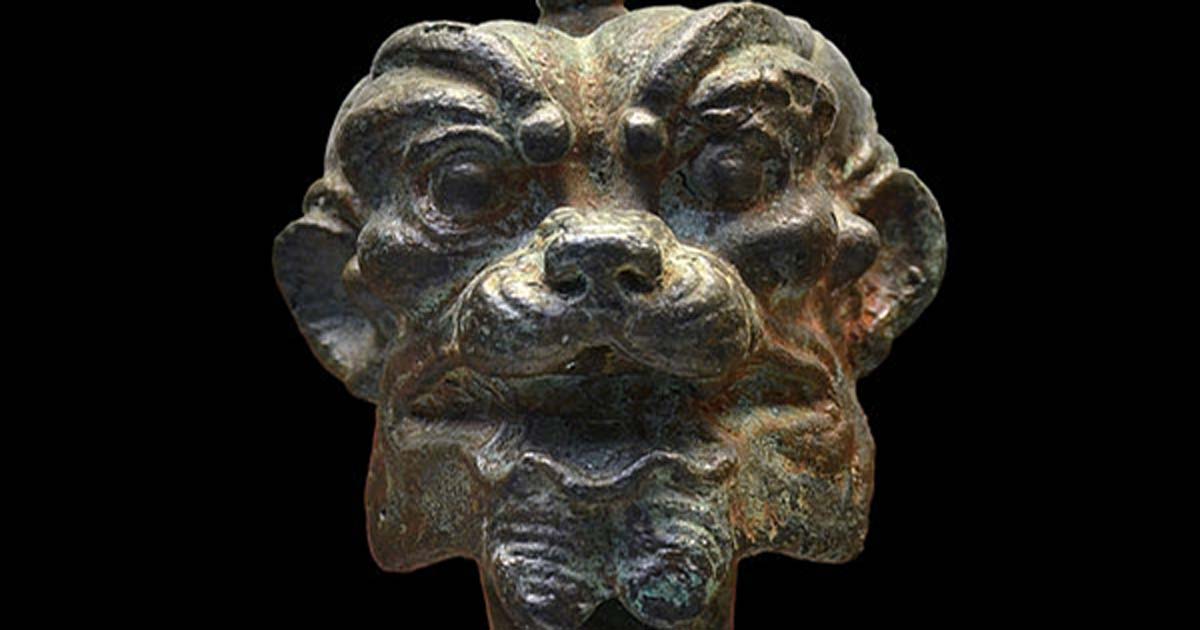
Far more numerous than the familiar images of the kings and queens of Egypt are the smaller and more obscure supernatural figures falling into a category of supernatural beings known as demons or daemons. They also have an ongoing existence after the pharaonic culture, the end of Paganism, the rise of Christianity, the coming of Islam, and even into our own modern era. When it comes to Ancient Egypt, the study of these supernatural entities is still in its infancy.

For more than 700 years, the Friary of Folloni in Italy has protected and guarded some small fragments of textile connected with the legend of St. Francis of Assisi in 1224 AD. Now, carbon-14 dating analysis reveals that the textile can be dated to 1220-1295.
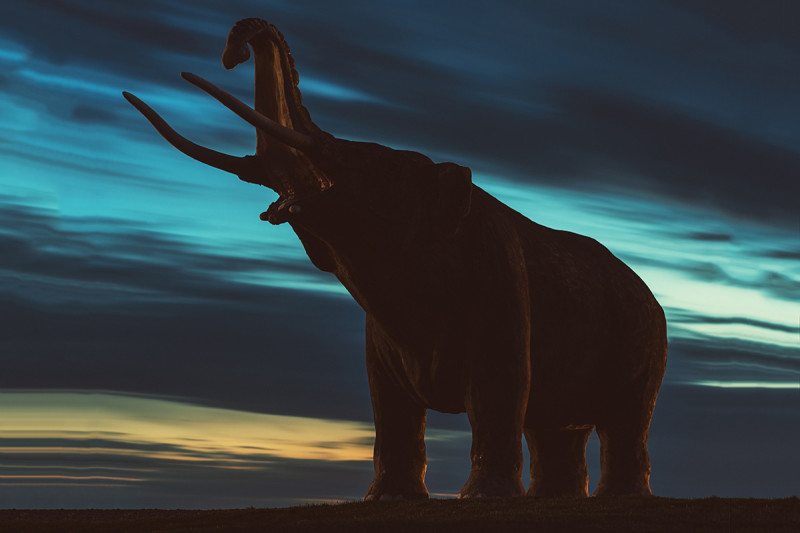
An extraordinary chapter has just been added to the story of the First Americans. Finds at a site in California suggest that the New World might have first been reached at least 130,000 years ago – more than 100,000 years earlier than conventionally thought. If the evidence stacks up, the earliest people to reach the Americas may have been Neanderthals or Denisovans rather than modern humans. Researchers may have to come to terms with the fact that they have barely scratched the surface of the North American archaeological record.

Researchers report finding fossilized remains of several interesting and unique extinct creatures in Wallacea: pygmy elephant-like Stegodon, two species of giant rats, and even evidence that Komodo dragons once lived on the island. Some species were dated to as recent as just 12,000 years ago. It is still not known why the creatures disappeared from the island.
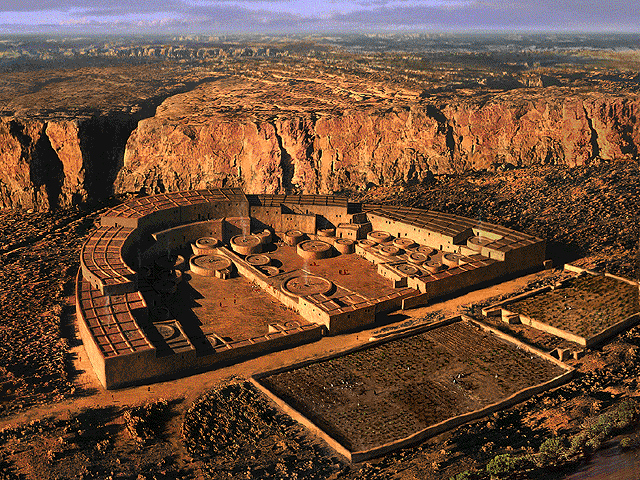
Archaeologists, professors and other researchers have called for more protections of an expansive area surrounding Chaco Culture National Historical Park in New Mexico, saying increased oil and gas development has the potential to destroy parts of the landscape that could provide a better understanding of the ancient civilization that once inhabited the region.

Diprotodon optatum was a massive wombat-like herbivore that lived in what is now Australia and New Guinea during the Pleistocene, until about 40,000 years ago. Analysis of one animal’s teeth suggests that it undertook seasonal migrations like those made by zebras and wildebeests in Africa.

Scientists in Canada have found preliminary evidence that the psychedelic Amazonian drink known as ayahuasca can help people overcome eating disorders.
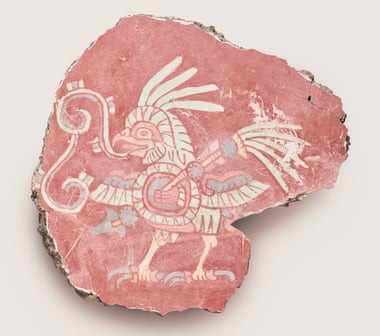
When archaeologists found a tunnel under Mexico’s ‘birthplace of the gods’, they could only dream of the riches they would discover. Now its wonders – from jewel-eyed figures to necklaces of human teeth – are being revealed to the world in a major exhibition opening this month at the De Young Museum in San Francisco.

Crayfish equipped with high-tech sensors have been drafted in by a Czech brewery in its quest to keep their water supply pure. The creatures, which react quickly to changes in their aquatic environment, are fitted with infrared biosensors and placed in fish tanks through which is pumped water from the same natural source that the brewery uses. Heartbeat and movement data is analyzed by a computer, and any changes in the animals' body or behavior flags a change in the purity levels of the water in its tank.

Photographer Justin Hofman was snorkeling along the coast of Indonesia when the tide swept a mountain of garbage his way. The photo he captured struck a chord with everyone who saw it: Amazing wildlife, horrible pollution. Hofman submitted the image to the Wildlife Photographer of the Year competition held by the Natural History Museum in London, where it's currently a finalist.

The first complete star map that still exists today was made in 650 AD in Dunhuang, western China, a city on the Silk Road. There, a star atlas was meticulously drawn onto a piece of paper, then filed away with other documents in a temple alcove.

One of the trees, Pisonia horneae, is dedicated to Frances Horne (1873-1967), an American illustrator who spent 45 years painting 750 watercolors of plants from Puerto Rico, of which only a small fraction were published. The other tree, Pisonia roqueae, was named after Dr. Ana Roqué de Duprey (1853-1933), a Puerto Rican amateur ethnobotanist who spent over three decades preparing a manuscript aimed at making botany accessible to the general public, which was never published.

Photothermal therapy (PTT) is an emerging noninvasive treatment option in which nanomaterials are injected and accumulate in cancer cells. A laser heats up the nanomaterials, and this heat kills the cells. Many of these nanomaterials are expensive, difficult to make, and toxic. However, a traditional Chinese ink called Hu-Kaiwen ink (Hu-ink) has similar properties to the nanomaterials used in PTT. According to study, the ink shows great promise for future treatment of tumor metastatic lymph nodes.

Made from a mix of gold and copper, pink-tinted rose gold got its start in the 19th century, when it was known as Russian gold, according to Sotheby's, and the blushing color has been going in and out of fashion ever since. But its history may stretch back much further. Archaeologists recently found an unexpected preference for pinkish gold jewelry among the Nahuange culture from the first millennium in present-day Colombia.
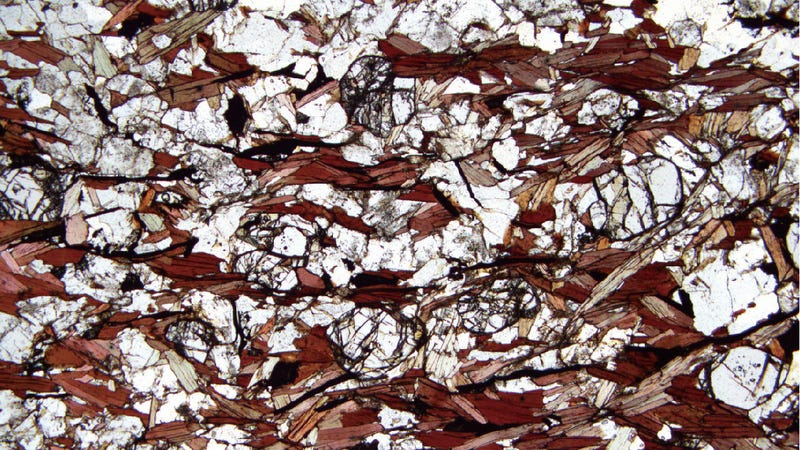
Researchers working at a sedimentary rock formation in northern Labrador, Canada, say they’ve uncovered evidence of primordial life in 3.95 billion year old rocks. The discovery, which is already drawing scrutiny and skepticism, suggests that microbial life emerged relatively quickly after the formation of our planet.

Based on the shape of their teeth and jaws, large plant-eating dinosaurs are generally thought to have been exclusively herbivorous. But for one group of dinosaurs, roughly 75 million year old poop tells another story. Their fossilized droppings, or coprolites, contain tiny fragments of mollusk and other crustacean shells along with an abundance of rotten wood.
This giant rat is 18 inches long, weighs up to two pounds, and cracks open coconuts with its bare teeth. One of the largest rat species living in the world, it took scientists 80 years to discover the giant Vika in the Solomon Islands.

If you had been in northern Canada 45 million years ago, you might have encountered the distant ancestor of all of the oaks in the Americas. That single species gave rise to 220 more and two distinct lineages—red oaks and white oaks—that moved south through the boreal zone to populate large swaths of the continent all the way into Mexico. These two findings—simultaneous evolutionary diversification are a surprise conclusion to a scientific mystery that went unresolved until now.

Jim Bowsher has been building his fascinating Temple of Tolerance for decades. Walking through his "backyard" is like going through a maze with all paths eventually winding their way to the Temple itself. The Temple is built of mainly stones, but has been peppered with a potpourri of objects, and is dedicated to peace and bringing people together in meaningful ways.

Found in a dusty drawer in Ambras Castle, Austria, in 1878 was a magnificent piece of featherwork, tucked away in a case and somewhat motheaten: a masterpiece of Mesoamerican art, probably Aztec, possibly from the court of Moctezuma, indigenous Aztec Emperor who ruled the Mexica from 1502 to 1520. The possibility that this spectacular object passed directly from the Emperor to Spanish conquistador Hernán Cortés gave it a value beyond price. It also meant that it was destined to be a point of dispute between the governments of Austria and Mexico up to the present day.

An international study led by researchers at Macquarie University has uncovered the ways in which giant meteorite impacts may have helped to kick-start our planet's global tectonic processes and magnetic field. The study, being published in the premier journal Nature Geoscience, explores the effect of meteorite bombardment, in geodynamic simulations of the early Earth.

In 2008, Eben Alexander, MD, academic neurosurgeon for over twenty-five years fell into a deep coma due to bacterial meningitis. After a week in a deep coma, his doctors put his survival rate well below 10 percent, with the caveat that if he did somehow emerge, he would be in a nursing home for the rest of his life. Not only did he make a full and miraculous recovery, but he recounted an incredibly deep and profound near-death experience from his time in this coma, in his book Proof of Heaven.

Article for Smithsonian contains an interview with a museum curatorial fellow regarding a new exhibition “Divine Felines: Cats of Ancient Egypt” opening Oct. 14 in the Smithsonian’s newly renovated Sackler Gallery explores how Egyptians regarded and revered cats for some 2,600 years.

A settlement from 11,500 years ago has been unearthed in the Hasankeyf Mound on the Tigris River’s coastline in the fifth stage of archaeology works at the ancient town of Hasankeyf in the southeastern province of Batman, which has been initiated with the Il?su Dam HES project protection and rescue works of the cultural heritage.

An up-close view of Mars’ rocky deposits by NASA’s Curiosity rover shows a changing climate in the planet’s ancient past that would have left the surface warm and humid enough to support liquid water — and possibly life. Evidence of an ancient lake points to the prospect of two unique habitats within its shores; the lower part of the lake was devoid of oxygen compared to an oxygen-rich upper half.
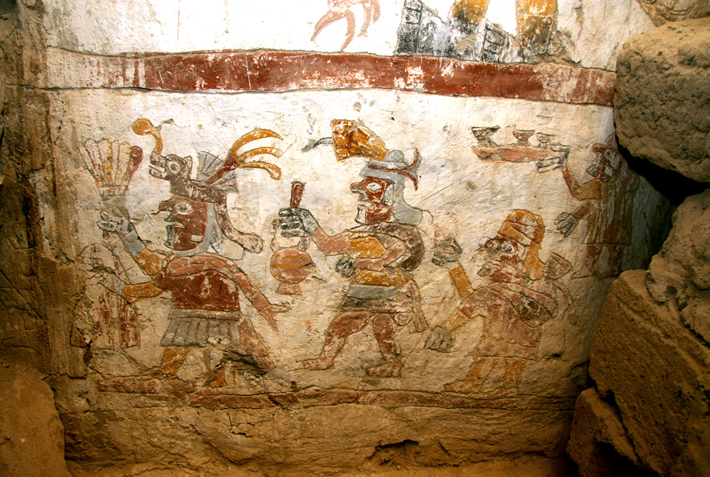
Cover story from Archaeology magazine: What was even more surprising was that so much more remained in situ, intact, and unexcavated. “We were soon looking at things that no one had seen since 780 AD, when parts of the site were deliberately buried,” says Trever. “We went in with a sense that Pañamarca was a site of lost monuments and lost masterpieces of the ancient Peruvian past, and were amazed to find out that not everything was lost at all.”
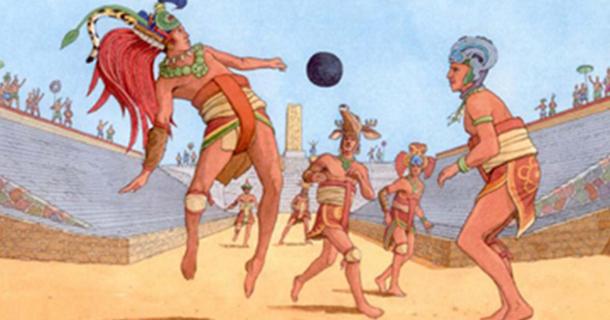
Archaeologists have deciphered two 1,300 year old stone panels that depict ancient Mayans playing with large balls while carrying impressive fans. The panels were found at the archaeological site of Tipan Chen Uitz in Belize and, according to the experts, date back to 700 AD

In 331 BC, Alexander the Great passed through what’s now northern Iraq, while chasing after Darius III of Persia, a recently defeated enemy, who would be dead within the year. In his takeover of the Persian empire, Alexander founded a city in this area, Qalatga Darband, which became a center of wine production before fading from history. Now declassified intelligence satellite and drone photos took a pictures of the city’s ruins, helping to find what was lost for nearly 2,000 years.

An amateur astronomer and eclipse-chaser penned this article explaining that Homer's Odyssey is the first ever account of its kind of a human interaction 3000 years ago using astronomy as an aid in sea navigation by the stars. An eclipse coincided with Odysseus’ return to Ithaca, his homeland, following his involvement in the legendary 10-year Trojan War and his further 10-year struggle home. Homer scribed accounts of Odysseus using star constellation pointers as an aid to navigate his challenging sail back home after the Trojan War.

Researchers in Israel unearthed a jar containing decapitated toads, in addition to evidence of cultivation of date palms and myrtle bushes from Middle Bronze Age. Tombs intentionally sealed in antiquity are priceless treasures because they are a time capsule that allows us to encounter objects almost as they were originally left. At that time, it was customary to bury the dead with offerings that constituted a kind of 'burial kit' which it was believed would serve the deceased in the afterworld.

Workers dredging a water reservoir stumbled upon a rare ek mukh linga one-faced stone sculpture of Lord Shiva dating to the 6th century CE in Harwan in the outskirts of Srinagar. The oval-shaped bust is nearly 2.5 feet in height.

Recently, Russian scientists have found around 7,000 mysterious landforms in Siberia, leaving many experts baffled. As experts explain, the gradual-rapid melting of permafrost in Siberia is making giant blow-out ‘hills’ to appear in the area, creating numerous problems as they pose a direct threat not only or life, but for roads and production facilities located in the area.

Excavation work in Minya, Egypt, has uncovered an ancient settlement that might be a monks’ complex, the antiquities ministry said, dating to the 5th century AD.
Bandits attempted to loot underground 2,000-year-old excavation site from Roman period. They were arrested after a brief foot chase. This is the second such arrest in two weeks.
/cdn.vox-cdn.com/uploads/chorus_image/image/56858477/2592017213735576.0.jpg)
Dubai has test-flown an uncrewed two-seater drone designed to transport people autonomously. Called the Autonomous Air Taxi (AAT), the city claims the vehicle will be the world’s first self-flying taxi service. The Volocopter AAT is environmentally friendly, powered by electricity, and the prototype version has a maximum flight time of 30 minutes, at a cruising speed of 50 km/h (31 mph), and a maximum airspeed of 100 km/h (62 mph).

In a new documentary on British television last week, archaeologists presented new evidence describing how the Great Pyramid was constructed. The new insight comes from papyrus discovered in the ancient port of Wadi al-Jarf on the Red Sea. Among the documents discovered there, a joint French-Egyptian team unearthed the diary of Merer, an official involved in the construction of the Great Pyramid. Through the documents, some more than 4,000 years old and some of the oldest papyri ever found, researchers gained a glimpse into Egyptian life under Pharaoh Khufu and the only first-person account of the Great Pyramid's construction.

A 35 year old man in France has regained some aspects of consciousness after being in a vegetative state of "unresponsive wakefulness" for 15 years since a car accident in 2001, after surgeons used a new technique to stimulate his brain via the vagus nerve in his neck.

Findings from anthropology research from University of California Davis suggests that despite its almost complete isolation, the inhabitants of Easter Island created a complicated social structure and amazing works of art before a dramatic change occurred. The island could have supported 17,500 people at its peak, which represents the upper end of the range of previous estimates.

The ritual burial site is known as a favissa, which refers to a gravesite specifically for statues. Archaeologists in Egypt have been carefully excavating the contents of one found in Karnak, which were buried there well over 2000 years ago. In total, the pit contained around 38 objects, including 14 statues of the god Osiris, a limestone Sphinx, three baboon statues representing the god Thoth, and a statue of Ptah, the God of Sculptors and craftsmen, laid to rest after it deteriorated. Article contains two foreign language videos with 3-D computer image renderings of the favissa.

A travel article for the ancient site enthusiast: What sort of bags did prehistoric people use to pack and carry things for travel? From Dartmoor to Kentucky to Jordan, evidence of prehistoric bags has been found all over the world. Article contains images and links to contents found in Mesolithic bags.

Australia has publicly committed to creating a national space agency as it looks to cash in on the lucrative and fast-evolving astronautical sector. The announcement came at a week-long Adelaide space conference attended by the world's top scientists. Australia's commitment to an agency follows the government in July ordering a review of the country's space industry capability, with a more complete strategy to be unveiled next year.

Sabanc? University in Turkey has developed nano clay reinforced packaging film containing clay nanotubes that has a shelf-life extending quality for perishables by preventing the over-ripening of fruits and vegetables and preventing microbial growth on meat.

Frida, the 7 year old yellow Labrador retriever, is deployed by the Mexican Navy (SEMAR), equipped with protective goggles and boots, in the event of natural disasters. In total, she has detected the bodies of 52 people throughout her career, 12 of whom are still alive.

Today’s thermal cameras, commercial drones and photogrammetric software has introduced a new realm of possibilities for collecting site data. The findings, published in Advances in Archaeological Practice, serve as a manual on how to use aerial thermography, as the co-authors hope to inspire other researchers to apply this methodology in their work.
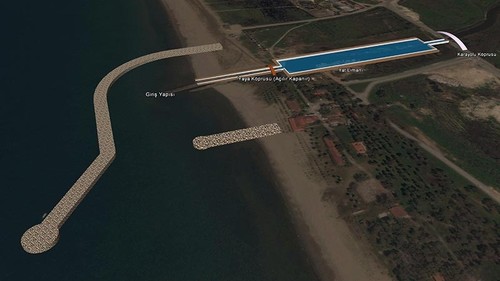
The Ancient Canal Project at the 10th century BC city of Ephesus, considered to be one of the greatest historical sites in the world will soon revive its ancient harbor. A 6,130 meter long portion of the canal was covered with alluvium over the centuries, but the project will expand the canal and reunite the ancient harbor with sea.

One of NASA’s 'human computers' who worked on the mission that saw American astronaut John Glenn orbit the Earth for the first time in 1962, has had a new research center named in her honour. At the opening of the Katherine G Johnson Computational Research Facility in Hampton, Virginia, Ms Johnson, now age 99, didn’t seem to get what all the fuss was about, and instead humbly gave credit to everyone else who was involved.

An unmanned NASA spacecraft known as OSIRIS-REX traveling to a distant asteroid veered toward Earth recently for a gravitational slingshot maneuver that will better aim it toward the sun-orbiting space rock, Bennu. The goal of its mission is to collect a sample from Bennu in 2018 and return it to Earth in 2023.




